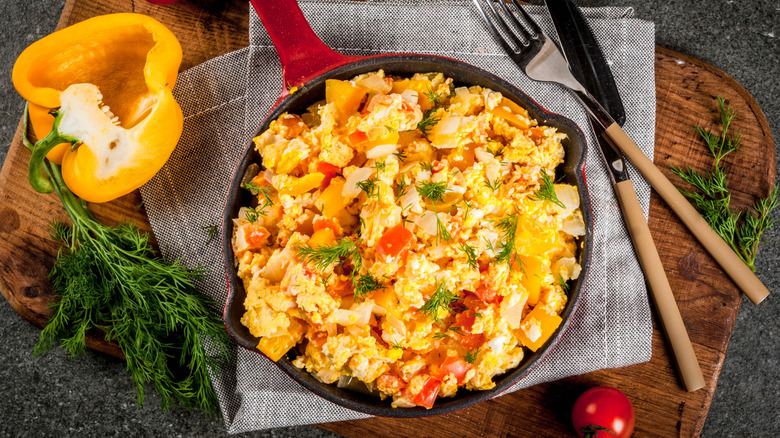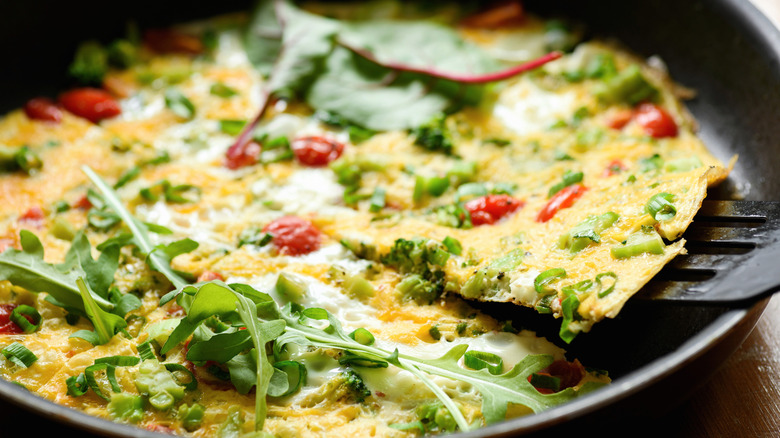How To Seamlessly Add Veggies To Your Eggs – No Chopping Required
The marriage of eggs and veggies in an omelet or scramble can be a nutritious, protein-packed breakfast; a delicious yet light brunch; or even work as a tasty, filling dinner with a side of green salad and crusty slice of bread. But first, you have to make it, which means pulling out the cutting board and chopping vegetables. Salvation from that time-consuming task lies in a kitchen appliance you might only be using to make smoothies — a countertop blender.
Grab eggs from the fridge, where you can keep them upside down for longer lasting freshness, crack them into the blender, and toss in whole vegetables or big chunks. Make sure to wash the veggies and prepare any that can't go in as is, like peeling off an onion's skin, removing a pepper's stem and seeds, or slicing off the tough bottom from asparagus. Cut harder vegetables like carrots or potatoes into smaller pieces. Put in a splash of milk or cream if you usually use it, or try Alton Brown's scientific hack for the creamiest scramble by adding a spoon of mayo, and you're ready to go.
Start the blender on low for several seconds, then pulse, so you can keep checking to see if the vegetables are chopped to the right size and the eggs are frothy. Pay close attention because it happens fast, and you don't want rubbery, overbeaten eggs, or vegetables so finely chopped that they almost liquify. Pour the eggs and veggies into a pan, season, drop in some shredded cheese or herbs if you like, and cook to your preferred doneness.
Which veggies to use and how blending can make eggs better
The vegetables you use may come down to what's in your crisper. But if you have some variety to choose from or are going to the grocery store, consider which ones would work best. You might love tomato in an omelet, but when it's chopped in a blender instead of by hand, it might release too much water into the eggs. A leafy and delicate vegetable like spinach could turn into something close to spinach juice. Sturdier vegetables like bell peppers, mushrooms, broccoli, or carrots would likely hold up better against your blender's blades.
While this technique is meant to save time and effort, it could also make the eggs better! Mixing eggs in a blender instead of whisking them yourself incorporates additional air, so they cook up light and fluffy. The only downside to this low-effort hack might be listening to a whirring blender when you're sleepily using it to make breakfast. When that happens, just put a thick dish towel under the machine to easily help silence the noise.


